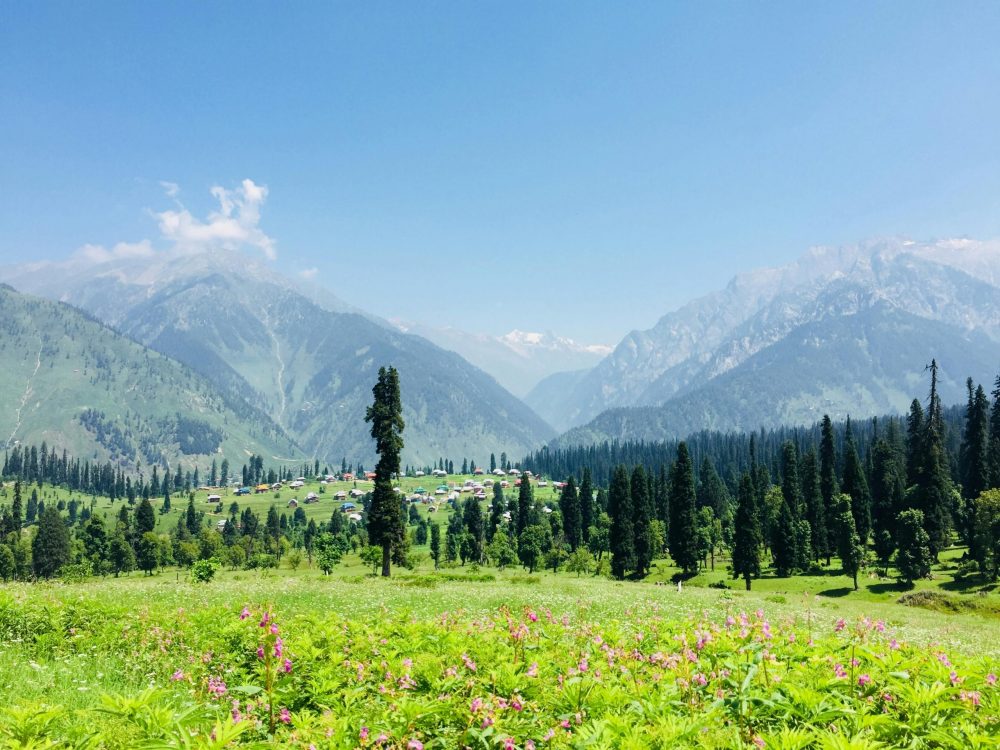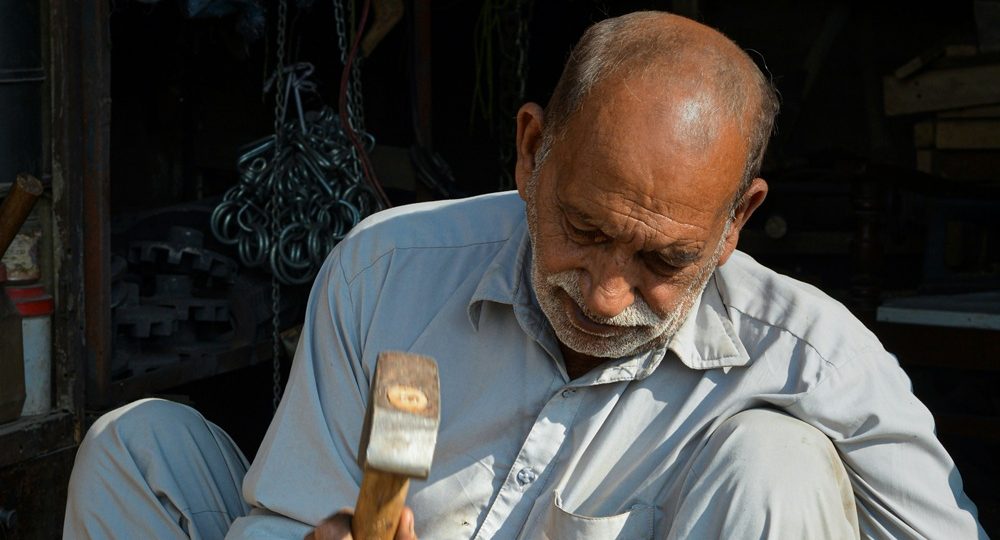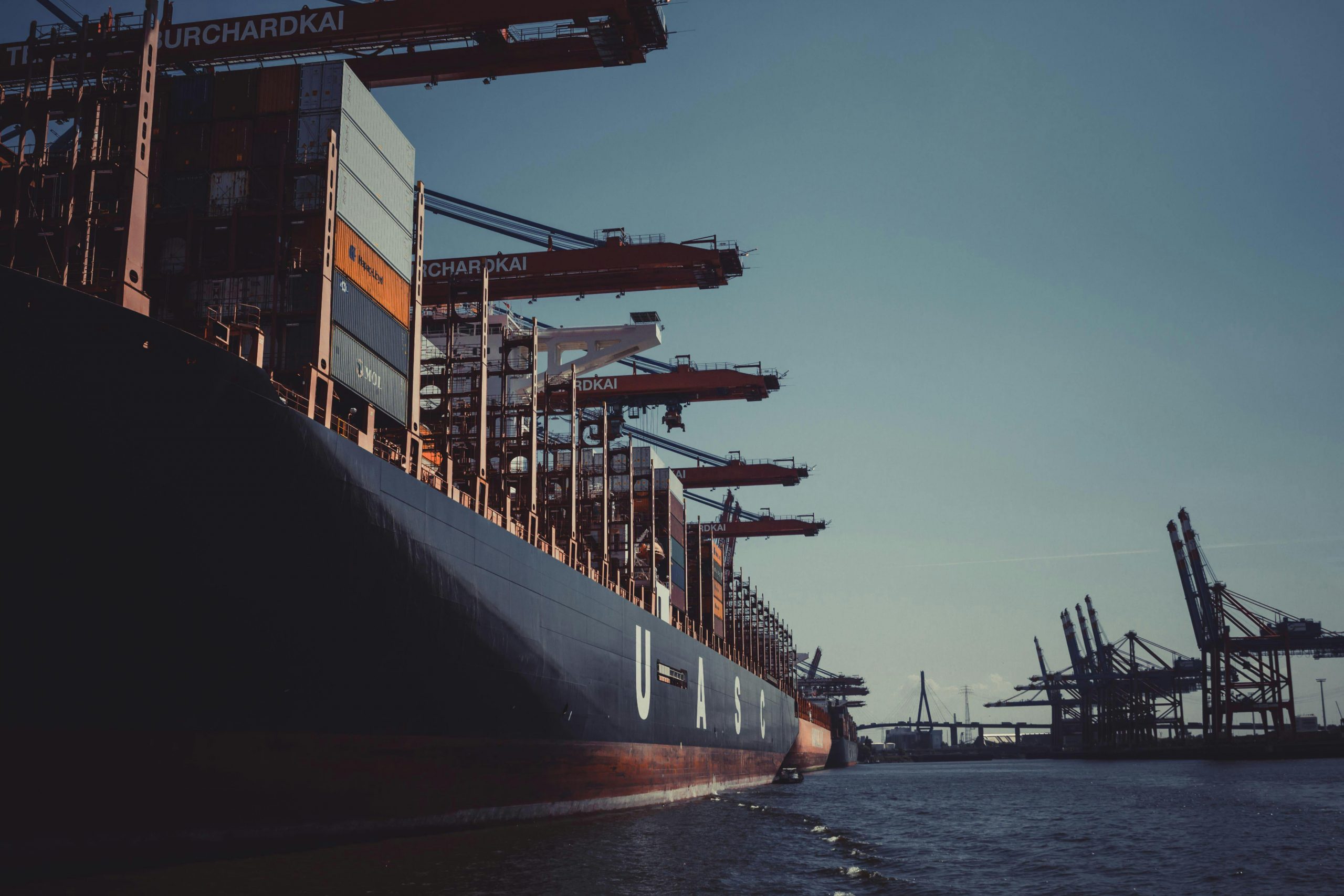This note has been prepared by Abrar Chaudhury, Senior Research Fellow and Programme Director at Saïd Business School, University of Oxford, and is based on the project “Addressing Constraints Limiting the Flow of Private Sector Investments for Climate Change Across the Textile Value Chain”, supported by the REMIT programme of FCDO.
Pakistan’s textile value chain (TVC)—from cotton fields to stitched garments—is the backbone of its economy. It drives 60% of the country’s exports, contributes 8.5% to GDP, and provides jobs for nearly 40% of the industrial workforce. But behind this economic engine lies a pressing environmental challenge.
The textile sector is also one of Pakistan’s biggest polluters, responsible for almost 9% of the country’s total greenhouse gas emissions. And the sector isn’t just contributing to the climate crisis—it’s increasingly feeling its effects. Floods are washing away cotton crops, extreme heat is making life unbearable for farm workers, and unpredictable weather is disrupting production across the board.
Add to that the growing pressure from global brands. Today’s consumers want transparency, sustainability, and low-carbon products. International buyers are demanding cleaner, traceable supply chains—and they’re not hesitating to drop suppliers who can’t deliver.
The message is clear: if Pakistan’s textile industry wants to stay in the game, it has to change. Going green is no longer a choice—it’s a necessity for survival and global relevance.
A recent study by the Consortium for Development Policy Research (CDPR) reveals both the urgent challenges and untapped opportunities that exist in greening Pakistan’s TVC. From climate-smart agriculture to investments in renewable energy, the private sector can play a transformative role—if supported by coherent policy and regulatory frameworks. Here’s how.

Climate Risks Are Real—and Rising
Pakistan’s geology supports a vital balance of glacial melts and monsoon rains, enabling it to feed and power a population of 230 million. But this sensitive ecosystem is threatened by a changing climate. Pakistan consistently ranks among the top 10 countries most vulnerable to climate change. In 2022 devastating, climate-induced floods affected 33 million people and caused over $30 billion in damage. The textile sector—already grappling with cotton shortages, water stress, and outdated machinery—is particularly exposed.
Cotton production, the starting point of the TVC, has declined by nearly 50% in the last decade due to heatwaves, floods, pest infestations, and inefficient irrigation. Meanwhile, spinning, weaving, dyeing, and finishing processes rely heavily on fossil fuels and inefficient equipment, leading to high emissions and operational costs. Without urgent adaptation and mitigation strategies, the TVC risks losing markets as global buyers demand low-carbon, traceable, and ethical supply chains.
Pakistan’s Position in Global Markets Is at Risk
Pakistan is the world’s seventh-largest cotton producer and the tenth-largest textile exporter, yet its textile exports declined by 15% in 2023. This position is increasingly precarious as the global apparel industry rapidly shifts toward sustainability. By 2026, sustainable clothing is expected to account for over 6% of a projected $2 trillion global apparel market by 2028. Major retailers like H&M and ZARA have committed to achieving net-zero emissions by 2040, setting new benchmarks for suppliers.
Pakistani exporters are struggling to keep up with this transformation. Many small and medium-sized enterprises (SMEs) face significant challenges, including regulatory compliance, data tracking, and access to finance. Meanwhile, competitors such as Bangladesh and Vietnam export nearly four times more than Pakistan, having adapted more swiftly to evolving market demands.
Despite some isolated initiatives, Pakistan lacks a cohesive national strategy or institutional framework to align its textile value chain with international climate and sustainability standards.

🌱 Opportunities to Unlock Climate Investment
While the road to sustainability is challenging, it also offers a wealth of opportunities—especially for Pakistan’s private sector. The CDPR report highlights high-impact entry points across the textile value chain where investment can drive both climate and economic gains. Many of these solutions already exist. What’s needed now is the capital, policy support, and scale to make them transformative.
1. 🌾 Climate-Smart Agriculture (CSA)
Improving cotton yields through CSA is a win-win: it reduces emissions, improves productivity, and raises farmer incomes. Programs like Better Cotton and local agri-tech startups such as SAWiE are already demonstrating success—promoting practices like organic fertilisation, drought-resistant seeds, and AI-powered crop monitoring. With targeted finance and technical support, CSA can dramatically improve the resilience and quality of the entire textile supply chain.
2. ♻️ Sustainable Materials and Textile Recycling
As global retailers ramp up sustainability commitments, the demand for eco-friendly textiles is rising fast. Pakistani firms like Gatron Industries are pioneering solutions such as Ecoron, a polyester yarn made from recycled plastic bottles. Other innovations include biodegradable polyesters and upcycled cotton waste. Scaling these solutions through private sector investment in circular economy models can reduce environmental impact while tapping into high-growth export markets.
3. 💧 Water and Chemical Efficiency
Water stress and pollution are escalating threats—but also areas ripe for innovation. Industry leaders like Interloop are implementing closed-loop water systems and chemical recycling, reducing both operational costs and ecological harm. Scaling up wastewater treatment infrastructure and transitioning to eco-certified chemicals can drastically reduce the sector’s water footprint and help meet global buyer expectations.
4. ☀️ Decarbonising Through Renewable Energy
The textile industry’s dependence on natural gas and fossil fuels makes it a significant emitter. Clean alternatives like solar photovoltaic (PV), biomass boilers, and battery storage systems are already gaining traction. But outdated regulations—such as restrictive net-metering caps—and steep upfront costs are stalling momentum. Raising the solar cap from 1MW to 5MW and introducing green financing incentives could accelerate widespread adoption of renewables across the sector.
5. 🔍 Building Transparent and Traceable Supply Chains
In today’s market, transparency isn’t optional—it’s a prerequisite. Global brands demand traceability from “farm to fashion” to ensure environmental and ethical standards. Digital platforms like Interloop’s Looptrace enable companies to track emissions and social metrics across the supply chain. Expanding traceability systems will not only improve compliance but also unlock new markets and enhance brand credibility for Pakistani exporters.
🏛️ Policy Priorities: Enabling Pakistan’s Green Textile Transition
Unlocking the potential of climate investment in Pakistan’s textile sector requires more than good intentions—it demands bold, coordinated policy action. To drive sustainable transformation at scale, policymakers must remove the structural barriers that are currently holding back private sector investment.
Below are five critical policy moves that can fast-track the green transition:
1. 🌾 Reform Cotton Sector Policies and Promote Climate-Smart Agriculture
Pakistan’s cotton sector—the foundation of its textile industry—is in urgent need of revitalisation. A comprehensive cotton revival strategy should:
- Enforce intellectual property rights for climate-resilient seed varieties
- Promote climate-smart agriculture (CSA) at scale
- Protect smallholder farmers through minimum support prices
Establishing a dedicated Institute for Climate-Smart Agriculture could help consolidate research, streamline extension services, and accelerate the adoption of sustainable practices across farming communities.
2. ⚡ Fix Energy Tariffs and Expand Net Metering
Pakistan’s manufacturers face some of the highest electricity tariffs in South Asia—undermining competitiveness and discouraging clean energy investment. Reforms should:
- Revise tariffs to reduce industrial energy costs
- Expand net-metering limits from 1MW to 5MW to incentivise rooftop solar
- Enable public-private partnerships (PPPs) to scale clean infrastructure and share investment risk
These changes would unlock renewable energy potential, particularly for SMEs looking to decarbonise operations affordably.
3. 💰 Incentivise Sustainable Innovation and Finance
To mainstream green upgrades across the textile sector, the government must create strong economic signals that reward sustainability. This includes:
- Offering tax breaks and grants for investments in energy-efficient machinery, wastewater recycling, and eco-friendly materials
- Creating concessional green finance lines through local bank, DFIs, global climate funds
- Prioritising access for SMEs, which often face limited financing options despite representing a large share of the sector
Such incentives will help reduce the upfront costs that deter many firms from adopting climate-friendly technologies.
4. 📝 Simplify Sustainability Reporting and Compliance
Many smaller textile firms struggle with complex and costly certification systems like GOTS, SMETA, and ISO 14001. The solution lies in localising standards and simplifying processes. Key steps include:
- Developing national sustainability standards aligned with global benchmarks
- Establishing a centralised sustainability support hub to provide training, templates, and digital compliance tools
- Promoting uniform reporting frameworks to reduce confusion and ensure consistent, credible emissions data
This would help level the playing field for smaller exporters and improve overall sector credibility.
5. 🛡️ Strengthen Environmental Governance and Enforcement
While Pakistan has several environmental regulations on paper, weak enforcement remains a serious issue. To build trust and accountability:
- Increase budget and staffing for provincial and national Environmental Protection Agencies (EPAs)
- Deploy real-time emissions monitoring systems to track compliance across industrial clusters
- Introduce penalties for greenwashing and non-compliance, backed by transparent enforcement
Robust regulation not only protects the environment—it also creates a fairer, more competitive landscape for responsible businesses.

💼 Private Sector Action: From Risk to Resilience
The private sector holds the key to unlocking Pakistan’s climate transformation—not just as a responder to risk, but as a driver of resilience and innovation. With the right vision and investment, businesses can shape a greener, more competitive textile value chain.
Here’s how:
- Backing Sustainable Ventures: From CSA to clean energy, local firms must invest in promising technologies and de-risk innovation.
- Promoting Cross-Sector Collaboration: Leading companies can act as champions to create ecosystems that include SMEs, startups, and farmers.
- Improving Talent and Training: Investing in green skills, from agronomy to sustainable design, will prepare the next generation for climate jobs.
- Driving Traceability: Building transparent supply chains is key to future market access and global competitiveness.
While large firms have begun this journey, smaller players need support to follow. Collective action is key.
🔄 A Systems Approach for Structural Change
What Pakistan’s textile industry needs is not a patchwork of pilot projects—but a coordinated, systems-level transformation. Tackling climate risks at scale requires aligning actors across the entire value chain around shared goals.
The Consortium for Development Policy Research (CDPR) calls for the creation of a Textile Value Chain Public-Private Partnership (TVC-PPP) under the umbrella of the Public-Private Partnership Authority (P3A). This formal body would bring together regulators, exporters, SMEs, investors, and researchers to co-develop and co-finance solutions that drive:
- Emission reductions and resilience building
- Competitiveness in global markets
- Inclusive, green job creation
Crucially, the TVC-PPP must also act as a climate finance mobilier—helping Pakistan access international resources such as the Green Climate Fund (GCF), while also developing domestic green capital markets. Despite the urgent need, Pakistan has accessed only a small portion of the climate finance available worldwide—securing just $4 billion against an estimated requirement of $101 billion.
A strong institutional framework, backed by public and private leadership, could change that trajectory.
🧶 Conclusion: Greening the Loom, Weaving the Future
Pakistan’s textile industry stands at a critical inflection point. Continuing on the current path means risking:
- Declining exports
- Increasing climate vulnerability
- Missed opportunities for innovation and employment
But the alternative is far more powerful: a future where Pakistan becomes a global leader in sustainable, climate-resilient manufacturing.
The choice is no longer optional. From cotton farms to cutting tables, from power looms to product shelves, every stakeholder in the textile value chain must pivot toward a greener, more inclusive path.
With the right combination of policy reforms, private sector innovation, and international support, Pakistan can weave a future that is both globally competitive and climate secure.
Now is the time for policymakers, financiers, industry leaders, and civil society to come together and act. Because if we green the loom today—the world will wear what Pakistan makes tomorrow.





